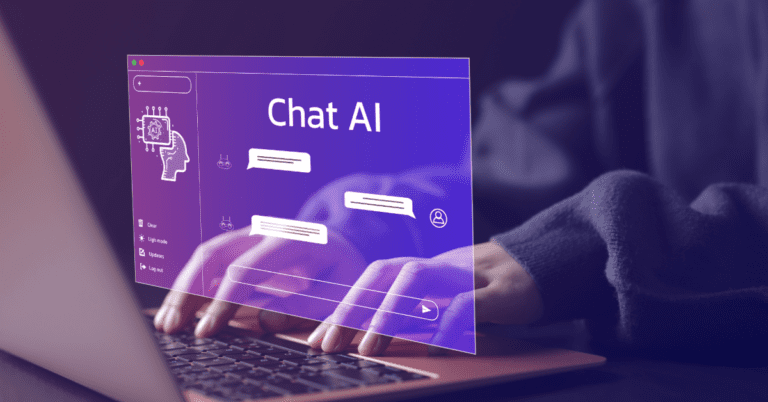
Digital transformation offers healthcare organizations a means of better serving their patients and empowering their employees while optimizing their processes and operations.
Learn how, by embracing a digital mindset, healthcare organizations can grow, leverage cutting-edge technologies, and remain ahead of their competitors.
Things to know about digital transformation in healthcare:
- What is Digital Transformation?
- 5 Digital Transformation Opportunities in Healthcare
- Barriers to Digital Transformation in Healthcare
What is digital transformation?
Digital transformation is the process of leveraging digital technologies to transform business processes, services, or operations. It can involve the creation of a new digital process, the maturation of an existing process, or the conversion of an analog process to a digital one.
Digital transformation is not a one-time fix, but rather a continual adaptation to evolving customer needs, new business models, environments, and technologies.
Digital Transformation Opportunities in Healthcare:
- Predictive analytics for proactive healthcare
- Optimized healthcare operations through automation
- Telemedicine
- Wearable devices
- AI and ML diagnosis and treatment
Predictive analytics for proactive healthcare
Predictive analytics, when applied to your organization’s comprehensive healthcare data, can be used to proactively identify and treat individuals who are at high risk for certain infections or diseases.
For instance, you can analyze data around groupings of patients to assess whether a particular demographic, such as women between the ages of 40 and 60 who follow certain dietary or exercise habits or have existing conditions, are more likely to be at risk for a disease. From there, the healthcare providers in your organization can do everything possible to proactively test for the illness, treat it, or outright prevent it.
Predictive analytics in healthcare can also be used to predict public health trends. This helps ensure your organization is properly equipped with the necessary supplies, equipment, and staff when a spike in the spread of illnesses, such as the flu and COVID-19, occurs.
Optimized healthcare operations through automation
According to the American Health Association, labor costs often represent more than 50% of hospital costs.
Digital transformation technologies like digital process automation can be used to automate lower-value, time-intensive tasks in healthcare organizations including:
- Reminding patients of prescription refills and appointments
- Appointment scheduling
- Collecting insurance information
- Collecting payments
- Entering, managing, and analyzing data
Automating these elements of your business process streamlines and optimizes operations, minimizes risk of human error, and significantly reduces labor costs.
Furthermore, automating lower-value tasks enables your healthcare teams to shift their time and efforts to more valuable, impactful work. This allows for improved, more personalized patient care and greater employee satisfaction.
Telemedicine
The COVID-19 pandemic caused the demand for telemedicine to skyrocket; patients needed accessible medical care without putting themselves at greater risk of infection by entering a heavily trafficked healthcare facility.
Although the pandemic has since died down, the desire for telehealth options remains. Telemedicine enables healthcare organizations to serve a more diverse population, in terms of geography, ability, and economic status.
Beyond empowering healthcare organizations to better serve patients, telemedicine also provides benefits including cost savings, convenience, and safer remote practices (as demonstrated during the pandemic).
Through current telemedicine capabilities, patients can communicate with doctors via video calls, schedule appointments, and receive detailed doctor’s notes and prescriptions. The need for telemedicine requires organizations to continually evolve, pursue digital transformation, and adopt new technologies and processes to serve their patients.
Wearable health devices
People are becoming increasingly health conscious and want greater visibility into their health metrics on a day-to-day basis. The number of health wearable device users in the US has grown significantly from 78 million in 2021 to a projected 93.7 million by 2025.
This digital transformation has enabled individuals to track their accurate, personal health data in real time. The most common wearable health device types include:
- Continuous Glucose Monitors for tracking blood sugar (commonly used by diabetics)
- Smart watches with health apps and features (used to track heart rate, exercise duration and activity type, calories burned, steps walked, and more)
- Fitness Trackers that monitor numerous health metrics including heart rate, heart rate variability, and AFib as well as sleep measurements like total sleep time, sleep efficiency and sleep stages
- Oximeters for monitoring the amount of oxygen carried in the blood (often used by patients with respiratory illnesses such as asthma and COPD)
Historically, people have only been able to access their personal health information when they go in for an annual physical examination or when they schedule a doctor’s appointment for a more urgent health condition.
Wearable devices have transformed the sector by providing individuals with personalized health data in real time, giving them the information they need to improve their health by focusing on prevention and maintenance.
Healthcare organizations can benefit from and capitalize on this technology transformation in the following ways:
- Incentivizing patient behaviors through gamification, such as setting challenges and competitive goals for their exercise and nutrition choices.
- Targeting insurance rates by using the data obtained from the user’s wearable device to more accurately assess their risk of illness and health conditions. You can also take this a step further with incentivizing patient behaviors by offering reduced insurance premiums to users who take certain preventive measures to improve their health.
- Personalizing the patient experience using information obtained from their wearable device.
AI and ML diagnosis and treatment
When your healthcare organization leverages artificial intelligence (AI) and machine learning (ML), you can:
- Increase the accuracy of diagnoses
- Eliminate unnecessary testing
- Achieve better cost value for patients
- Increase the speed at which patients start receiving treatment
- Analyze medical data, including patient records, medical images, and lab results to make predictions and recommend appropriate treatments
- Analyze medical data to identify patients who may be at greater risk for certain conditions or diseases, allowing for earlier intervention and treatment
An example of the real-world application of AI and ML to optimize healthcare operations is sampling radiology images to classify disease and damage to soft and hard tissue. AI and ML can then be used to triage, diagnose, and recommend appropriate treatments based on that analysis.
Leveraging diagnostic tests with ML and AI capabilities reduces significant workload on qualified radiologists and leads to faster assessments and treatments, all at a better cost value for patients.
AI and ML can lift additional burdens on healthcare providers by analyzing massive amounts of patient data to identify individuals who may be at a greater risk of certain diseases and conditions. This enables faster, more proactive intervention and treatment.
Barriers to Digital Transformation in Healthcare
Implementing digital transformation within your organization in any of the ways identified above poses significant benefits. However, in order to fully realize these benefits, you must overcome some notable obstacles:
- Compliance with regulations: When implementing your digital transformation, it’s vital to remain cognizant of and compliant with the various laws and regulations in the healthcare industry, such as HIPAA.
- Change management: Any major change in technology and processes can be met with internal resistance. Organizational change management (OCM) helps to maximize adoption in your organization, ensuring your digital transformation sticks and your investment is worthwhile.
- Lack of technical expertise: Achieving digital transformation requires deep levels of technical skills and expertise that are not always found in healthcare organizations. You may need to partner with technology consulting experts to tackle your project and bring your vision to life.
Optimizing Your Patients’ Treatment with Digital Transformation
A successful digital transformation enables your healthcare organization to accelerate workflows, increase efficiency, and better serve your patients.
At AIM Consulting, we offer expert guidance to chart your path forward by identifying the processes, tools, and technology solutions needed to embrace digital transformation.
Need Help Transforming Your Healthcare Operations?
A digital transformation strategy is not a one-size-fits-all exercise; it needs to be customized for your organization. We are technology consulting experts & subject-matter thought leaders who are experienced in developing customized solutions to deliver unparalleled value to our client partners.




